Tutorials
ISWCS’07
will provide six tutorials on 16 October 2007.
|
Morning
|
T1: Multipath Characterization of Antennas and
Mobile Terminals for Diversity and MIMO Systems
- Per-Simon Kildal and Jan Carlsson, Chalmers
University of Technology, Sweden
|
T3: From Cognitive Radios to Cognitive Wireless
Networks
- Petri Mähönen and Marina Petrova, RWTH Achen
University, Germany
|
T5: Introduction to ITS (Intelligent
Transportation Systems) Communication Solutions
- Per-Jarle Furnes and Runar Søraasen, Q-free,
Norway
|
|
Afternoon
|
T2: UWB (Ultra-Wideband) Technology and its
Standardization
- Huan-Bang Li, NICT, Japan
|
T4: Multiuser Communications
- Ralf Müller, NTNU, Norway
|
T6: RFID (Radio Frequency Identification) Systems
- Boon Sain Yeo, SensiMesh,
Singapore
|
T1: Multipath Characterization of Antennas and
Mobile Terminals for Diversity and MIMO Systems
The reverberation chamber has for many years found
application in the EMC area. Recently, we have shown that it with great
advantage can be used also for antenna measurements as it emulates
effectively an isotropic multi-path propagation environment. The
lecture will give the basic theory of reverberation chambers, and show
how the chamber can used to measure radiation efficiency, free space
radiation impedance, and diversity gain of antennas; total radiated
power and receiver sensitivity of mobile phones and other wireless or
mobile terminals (GSM, CDMA, DECT, Bluetooth, UMTS); and channel
capacity of MIMO antenna systems. The chamber is the only known
measurement instrument for realistically measuring diversity gain and
channel capacity; the alternative being to drive measurement
instruments around in an actual urban environment. A major advantage
with this new measurement method is that the measurements fast and
easily can be performed when the antenna or phone is located in
different talk positions relative to a head phantom or other
environments.
The reverberation chamber with antenna measurement
procedures have been commercialized by the company BluetestAB (www.bluetest.se).
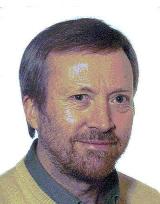 Per-Simon
Kildal received the Ph.D. and Doctor Technicae degrees from
the Norwegian Institute of Technology (NTH) in 1982 and 1990. From 1979
to 1989, he was SINTEF research institute in Norway. Since 1989, he has
been a Professor at Chalmers University of Technology, Gothenburg,
Sweden. Kildal is Fellow of IEEE since 1995, and he has done several
services to the IEEE Antennas and Propagation Society. He has authored
more than 200 papers in IEEE or IEE journals and conferences,
concerning antenna theory, analysis, design and measurement. His
textbook Foundations of Antennas - A Unified Approach (Lund,
Sweden: Studentlitteratur, 2000) has been well received.Kildal has done
the electrical design and analysis of two very large antennas: The
120-m long and 40-m wide cylindrical parabolic reflector antenna of the
EISCAT Scientific Association, and the Gregorian dual-reflector feed of
the 300-m diameter radio telescope in Arecibo. Kildal is the originator
of the concept of soft and hard surfaces through which he and his
coworkers preceded much of the recent research on electromagnetic
bandgap surfaces and metamaterials. The last seven years Kildal and his
group at Chalmers have pioneered the development of the reverberation
chamber into an accurate measurement tool for characterizing antennas
and wireless terminals subject to Rayleigh fading.Kildal has founded
two companies: COMHATAB (www.comhat.com) and BluetestAB (www.bluetest.se). Per-Simon
Kildal received the Ph.D. and Doctor Technicae degrees from
the Norwegian Institute of Technology (NTH) in 1982 and 1990. From 1979
to 1989, he was SINTEF research institute in Norway. Since 1989, he has
been a Professor at Chalmers University of Technology, Gothenburg,
Sweden. Kildal is Fellow of IEEE since 1995, and he has done several
services to the IEEE Antennas and Propagation Society. He has authored
more than 200 papers in IEEE or IEE journals and conferences,
concerning antenna theory, analysis, design and measurement. His
textbook Foundations of Antennas - A Unified Approach (Lund,
Sweden: Studentlitteratur, 2000) has been well received.Kildal has done
the electrical design and analysis of two very large antennas: The
120-m long and 40-m wide cylindrical parabolic reflector antenna of the
EISCAT Scientific Association, and the Gregorian dual-reflector feed of
the 300-m diameter radio telescope in Arecibo. Kildal is the originator
of the concept of soft and hard surfaces through which he and his
coworkers preceded much of the recent research on electromagnetic
bandgap surfaces and metamaterials. The last seven years Kildal and his
group at Chalmers have pioneered the development of the reverberation
chamber into an accurate measurement tool for characterizing antennas
and wireless terminals subject to Rayleigh fading.Kildal has founded
two companies: COMHATAB (www.comhat.com) and BluetestAB (www.bluetest.se).
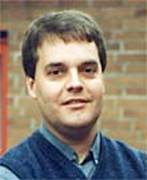 Jan Carlsson (M’98) was
born in Sweden, on May 6, 1962. He received the M.S.E.E. and Ph.D.
degrees from Chalmers University of Technology, Göteborg, Sweden, in
1986 and 1998, respectively. From 1986 to 1990, he was an EMC-Engineer
with Ericsson Radar Electronics AB, Mölndal, Sweden. Currently he is
the Head of Research at the EMC Department, SP Swedish National Testing
and Research Institute, Borås, Sweden. He is also an Adjunct Professor
of Computational Electromagnetics in the Department of Signals and
Systems, Chalmers University of Technology. His research is in the area
of computation techniques for electromagnetic problems as well as new
measurement techniques involving reverberation chamber, especially for
applications in EMC and antennas. He is one of the authors of the EMMA
Handbook (EMC handbook issued by the Swedish Defence Material
Administration). Jan Carlsson has many years experience as a lecturer
of different short courses, including both EMC and new measurement
techniques for antennas. From 2002-2004 he was the Chairman of the
Swedish EMC Chapter. He is currently a Member of the Swedish National
Committee for Radio Science (SNRV), Section E, and Applied
Computational Electromagnetics Society (ACES). Jan Carlsson (M’98) was
born in Sweden, on May 6, 1962. He received the M.S.E.E. and Ph.D.
degrees from Chalmers University of Technology, Göteborg, Sweden, in
1986 and 1998, respectively. From 1986 to 1990, he was an EMC-Engineer
with Ericsson Radar Electronics AB, Mölndal, Sweden. Currently he is
the Head of Research at the EMC Department, SP Swedish National Testing
and Research Institute, Borås, Sweden. He is also an Adjunct Professor
of Computational Electromagnetics in the Department of Signals and
Systems, Chalmers University of Technology. His research is in the area
of computation techniques for electromagnetic problems as well as new
measurement techniques involving reverberation chamber, especially for
applications in EMC and antennas. He is one of the authors of the EMMA
Handbook (EMC handbook issued by the Swedish Defence Material
Administration). Jan Carlsson has many years experience as a lecturer
of different short courses, including both EMC and new measurement
techniques for antennas. From 2002-2004 he was the Chairman of the
Swedish EMC Chapter. He is currently a Member of the Swedish National
Committee for Radio Science (SNRV), Section E, and Applied
Computational Electromagnetics Society (ACES).
T2: Ultra-Wideband Technology and its
Standardization for Wireless Personal Area Networks
A radio communication system is classified into the
ultra-wideband (UWB) category when it occupies a frequency bandwidth of
more than 20% of its central frequency or larger than 500MHz. Since its
commercial use was approved by FCC in 2002, UWB has gathered tremendous
interests in both academic researches and industrial developments. A
number of standardization bodies including IEEE802, ECMA, and ISO have
worked on UWB based standards. Besides FCC, regulatory authorities in
Japan, EU, and other countries or areas issued their own UWB
regulations. These activities have been accelerating the
commercialization for UWB. Among a number of distinguished
characteristics, UWB is essentially able to provide high data-rate
communications and high precision ranging because of its nature of
ultra wide-band occupancy in frequency domain and extremely narrow
pulse in time domain. This tutorial gives an overview on UWB related
issues including technology, standardization, and regulation. More
attentions are put on its applications in wireless personal area
networks (WPAN) including both communications and ranging issues.
Standardization activities on high-rate UWB and low-rate UWB are
reviewed. Emphasis will be put on IEEE 802.15.4a, which is a UWB
standard approved in March 2007 as an alternative PHY for low-rate
WPAN. Main features and parameters of IEEE 802.15.4a will be described
in detail. Recently, body area network (BAN) was proposed as a new
standard candidate and is studied within IEEE 802.15.MBAN. In which,
UWB is also considered as a competitive technology. A brief guidance on
IEEE 802.15.MBAN will be given in this tutorial.
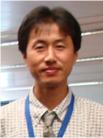 Huan-Bang Li received the B.S. degree
from NorthernJiaoTongUniversity, Beijing, China in 1986. He received
the M.S. and the Dr. of Eng. degrees from Nagoya Institute of
Technology, Nagoya, Japan in 1991 and 1994 respectively. He joined the
Communications Research Laboratory (CRL), Japan in 1994 (now, National
Institute of Information and communications Technology: NICT). He is
now a senior researcher of NICT. His research interests include mobile
satellite communications, coding, modulation, UWB, medical ICT, etc..
From 1999 to 2000, he was a Visiting Scholar at Stanford University,
CA, USA. He currently serves as the vice chairman of IEEE 802.15.MBAN.
He received the Young Engineer Award and the Excellent Paper Award of
IEICE Japan in 1996 and 1998, respectively, and the Distinguished
Patent Award from the Ministry of Science and Technology Agency of
Japan in 2000. Huan-Bang Li received the B.S. degree
from NorthernJiaoTongUniversity, Beijing, China in 1986. He received
the M.S. and the Dr. of Eng. degrees from Nagoya Institute of
Technology, Nagoya, Japan in 1991 and 1994 respectively. He joined the
Communications Research Laboratory (CRL), Japan in 1994 (now, National
Institute of Information and communications Technology: NICT). He is
now a senior researcher of NICT. His research interests include mobile
satellite communications, coding, modulation, UWB, medical ICT, etc..
From 1999 to 2000, he was a Visiting Scholar at Stanford University,
CA, USA. He currently serves as the vice chairman of IEEE 802.15.MBAN.
He received the Young Engineer Award and the Excellent Paper Award of
IEICE Japan in 1996 and 1998, respectively, and the Distinguished
Patent Award from the Ministry of Science and Technology Agency of
Japan in 2000.
T3: From Cognitive Radios to Cognitive Wireless
Networks
This tutorial starts by giving a quick historical
background on the cognitive radios. We describe what is meant by
spectrum agile radios and by full cognitive radios ("Mitola Radios").
The main emphasis on the tutorial is to show what are the implications
and the current research results on building cognitive wireless
networks. The current work has been mostly cognitive radio and game
theory specific. In this tutorial we outline how cognitive techniques
can be used to build out full cross-layer and network wide optimization
methods. The tutorial illustrates how concepts from multi-objective
optimization and machine learning can be used to shape the design of
cognitive and self-configuring networks. The tutorial is emphasizing
the architectural concepts and emerging new methodologies. The tutorial
also provides attendees with knowledge of the most important concepts
and open research questions in this emerging field. As such it is also
suited for beginning graduate students.
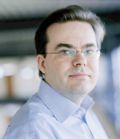 Petri Mähönen is currently a full
professor and holds Ericsson Chair of Wireless Networks at the
RWTHAachenUniversity in Germany. Before joining to RWTH Aachen in 2002,
he was a research director and professor at the Centre for Wireless
Communications and the University of Oulu. He has studied and worked in
the United States, United Kingdom and Finland. He has been a principla
investigator in several international research projects, including
initiating and leading several large European Union research projects.
Dr. Mähönen has published more than 150 papers in international
journals and conferences and has been invited to deliver research talks
at many universities, companies and conferences. He is a senior member
of IEEE and ACM, and fellow of RAS. He is inventor or co-inventor for
over 20 patents or patent applications. In 2006, he was awarded Telenor
research prize. He has been particularly active in cognitive wireless
network research. He has been serving in different roles in relevant
cognitive communications domain conferences, such as DySPAN, CogNet and
CrownCom. He has been also guest-editor for several special issues in
the field. He is currently also a research area coordinator and one of
the principal investigators for a newly formed Ultra High Speed Mobile
Information and Communication (UMIC) research cluster at RWTH, which is
one of the German national excellence clusters established in 2006. One
of the research domains in UMIC cluster is also cognitive radio network
technologies. His present research interest include cognitive wireless
networks, embedded intelligence, mathematical physics inspired analysis
methods, performance evaluation of comple networks and future
(wireless) network access technologies. Petri Mähönen is currently a full
professor and holds Ericsson Chair of Wireless Networks at the
RWTHAachenUniversity in Germany. Before joining to RWTH Aachen in 2002,
he was a research director and professor at the Centre for Wireless
Communications and the University of Oulu. He has studied and worked in
the United States, United Kingdom and Finland. He has been a principla
investigator in several international research projects, including
initiating and leading several large European Union research projects.
Dr. Mähönen has published more than 150 papers in international
journals and conferences and has been invited to deliver research talks
at many universities, companies and conferences. He is a senior member
of IEEE and ACM, and fellow of RAS. He is inventor or co-inventor for
over 20 patents or patent applications. In 2006, he was awarded Telenor
research prize. He has been particularly active in cognitive wireless
network research. He has been serving in different roles in relevant
cognitive communications domain conferences, such as DySPAN, CogNet and
CrownCom. He has been also guest-editor for several special issues in
the field. He is currently also a research area coordinator and one of
the principal investigators for a newly formed Ultra High Speed Mobile
Information and Communication (UMIC) research cluster at RWTH, which is
one of the German national excellence clusters established in 2006. One
of the research domains in UMIC cluster is also cognitive radio network
technologies. His present research interest include cognitive wireless
networks, embedded intelligence, mathematical physics inspired analysis
methods, performance evaluation of comple networks and future
(wireless) network access technologies.
 Marina Petrova works as a chief
research scientist at the Department of Wireless Networks at the
RWTHAachenUniversity. She graduated in Electronics and
Telecommunications engineering from the University of St.Cyril and
Methodius, Skopje, Macedonia. Her research interest are focused on
cognitive wireless networks, cognitive radios and adaptive wireless
systems technologies. The topic of her Ph.D. thesis work at the RWTH
Aachen has been also the multi-parameter optimization methods for
cognitive radio networks. As part of her research work she has
participated in the several international cooperative projects and
industry projects in the field of wireless communications and cognitive
radios. In Aachen she has also lead the research work that has been
done towards the prototype implementation of gnuRadio based cognitive
resource manager for cognitive radios. He has also served in technical
program and organizing committees of conferences, among those IEEE
DySPAN, IEEE Crowncom, the leading conferences in the field of
cognitive radios and networks. Marina Petrova works as a chief
research scientist at the Department of Wireless Networks at the
RWTHAachenUniversity. She graduated in Electronics and
Telecommunications engineering from the University of St.Cyril and
Methodius, Skopje, Macedonia. Her research interest are focused on
cognitive wireless networks, cognitive radios and adaptive wireless
systems technologies. The topic of her Ph.D. thesis work at the RWTH
Aachen has been also the multi-parameter optimization methods for
cognitive radio networks. As part of her research work she has
participated in the several international cooperative projects and
industry projects in the field of wireless communications and cognitive
radios. In Aachen she has also lead the research work that has been
done towards the prototype implementation of gnuRadio based cognitive
resource manager for cognitive radios. He has also served in technical
program and organizing committees of conferences, among those IEEE
DySPAN, IEEE Crowncom, the leading conferences in the field of
cognitive radios and networks.
T4: Multiuser Communications
Multiuser communication is developed using single-user
communication methods as building blocks. The tutorial addresses the
multiple-access channel, the broadcast channel, as well as more
complicated multiuser setups. The availability of various amounts of
channel state information at different sides of the multiuser channel
is decisive and its various implications are explained. The often
fuzzily defined notion of "multiuser diversity" is classified into
different effects corresponding to different fading conditions. The
overall aim is to give a systematic view of multiuser communications.
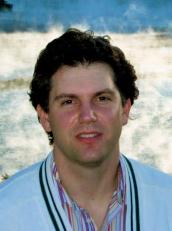 Ralf R. Müller received the Dipl.-Ing.
and Dr.-Ing. degree with distinction from University of
Erlangen-Nuremberg in 1996 and 1999, respectively. From 2000 to 2004,
he directed a research group at Forschungszentrum Telekommunikation
Wien (ViennaTelecommunicationsResearchCenter) in Vienna, Austria and
taught as an adjunct professor at Vienna University of Technology.
Since 2005 he has been a full professor at the Department of
Electronics and Telecommunications at the Norwegian University of
Science and Technology (NTNU) in Trondheim, Norway. He held visiting
appointments at Princeton University, U.S.A., Institute Esurecom,
France, the University of Melbourne, Australia, The University of Oulu,
Finland, The National University of Singapore, and
Babes-BolyaiUniversity, Cluj-Napoca, Romania. Dr. Müller received the
Leonard G. Abraham Prize (jointly with Sergio Verdú) for the paper
”Design and Analysis of Low-Complexity Interference Mitigation on
Vector Channels” from the IEEE Communications Society. He was presented
awards for his dissertation ”Power and Bandwidth Efficiency of
Multiuser Systems with Random Spreading” by the Vodafone Foundation for
Mobile Communications and the German Information Technology Society
(ITG). Moreover, he received the ITG award for the paper ”A Random
Matrix Model for Communication Via Antenna Arrays” as well as the
Philipp-Reis Award (jointly with Robert Fischer). Dr. Müller has
published some 100 papers on multiuser communications in international
journals and conferences and served as an associate editor for the IEEE
Transactions on Information Theory from 2003 to 2006. Ralf R. Müller received the Dipl.-Ing.
and Dr.-Ing. degree with distinction from University of
Erlangen-Nuremberg in 1996 and 1999, respectively. From 2000 to 2004,
he directed a research group at Forschungszentrum Telekommunikation
Wien (ViennaTelecommunicationsResearchCenter) in Vienna, Austria and
taught as an adjunct professor at Vienna University of Technology.
Since 2005 he has been a full professor at the Department of
Electronics and Telecommunications at the Norwegian University of
Science and Technology (NTNU) in Trondheim, Norway. He held visiting
appointments at Princeton University, U.S.A., Institute Esurecom,
France, the University of Melbourne, Australia, The University of Oulu,
Finland, The National University of Singapore, and
Babes-BolyaiUniversity, Cluj-Napoca, Romania. Dr. Müller received the
Leonard G. Abraham Prize (jointly with Sergio Verdú) for the paper
”Design and Analysis of Low-Complexity Interference Mitigation on
Vector Channels” from the IEEE Communications Society. He was presented
awards for his dissertation ”Power and Bandwidth Efficiency of
Multiuser Systems with Random Spreading” by the Vodafone Foundation for
Mobile Communications and the German Information Technology Society
(ITG). Moreover, he received the ITG award for the paper ”A Random
Matrix Model for Communication Via Antenna Arrays” as well as the
Philipp-Reis Award (jointly with Robert Fischer). Dr. Müller has
published some 100 papers on multiuser communications in international
journals and conferences and served as an associate editor for the IEEE
Transactions on Information Theory from 2003 to 2006.
T5: Introduction to ITS (Intelligent
Transportation Systems) Communication Solutions
Cooperative vehicle-infrastructure systems will allow
vehicles to cooperate directly with other nearby vehicles, and with the
immediate roadside infrastructure, thus sharing information on the
latest traffic information for greater safety, efficiency and a better
environment. Each equipped vehicle will be able to connect and
communicate via local ad hoc networks of vehicles and roadside
equipment in the vicinity, and also via an always-on network connection
to access a wide range of journey support and other services. The
pre-requisite is a harmonised technology for vehicle-to-vehicle (V2V)
and vehicle-to-infrastructure (V2I) communication and networking. CVIS
will develop a multi-channel terminal capable of connecting with a wide
range of potential carriers, including cellular networks (GPRS, UMTS),
mobile wireless local area networks (WLAN, or Wi-Fi), short range
microwave beacons (DSRC) or infra-red (IR). This will be based on the
new international “CALM” (ISO) standards, ensuring full
interoperability between different makes of car and of traffic
management systems.
The tutorial will give an introduction to the CALM
(Continuous Access Long and Medium range (see http://www.calm.hu/ for further
reference) standard and its implementation in the CVIS project
(Co-operative Vehicle-Infrastructure Systems, - a 6. FW EU Integrated
Project, involving more than 50 partners (http://www.cvisproject.org/)
and summarize current status, both in the development of the standard
and in the project. The main focus in the tutorial will be the
communication aspects (not so much attention will be paid to the CVIS
applications.)
(Picture missing) Runar SØRÅSEN is a
Sivilingeniør/M.Sc in Electronic Engineering from the
NorwegianUniversity of Science and Technology (NTNU). Currently he is
Technical Project Manager at Q-Free's R&D department, participating
in the European research project CVIS, and in several related national
research projects. Runar has 10 year experience from the semiconductor
industry, both as design engineer and project manager. He was Senior
Design Engineer in Atmel Corp. from 2001 to 2006, developing analog
periferi for microcontrollers.
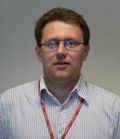 Per Jarle Furnes, born 1968, got a
master degree in Microelectronics, NTH - Trondheim in 1991 and has been
in Q-Free since 1992. Mr. Furnes has been involved in international
standardisation since 1994 and is still active member of working groups
within CEN and ISO. Mr. Furnes has hold various positions within the
organisation ranging from project management, leading the technology
development department responsible for all research and product
development programmes inside Q-Free, and currently business
development, responsible for new strategies within Q-Free group. Per Jarle Furnes, born 1968, got a
master degree in Microelectronics, NTH - Trondheim in 1991 and has been
in Q-Free since 1992. Mr. Furnes has been involved in international
standardisation since 1994 and is still active member of working groups
within CEN and ISO. Mr. Furnes has hold various positions within the
organisation ranging from project management, leading the technology
development department responsible for all research and product
development programmes inside Q-Free, and currently business
development, responsible for new strategies within Q-Free group.
Q-Free (Norway)
Q-Free is a leading supplier of technology and products
for electronic toll collection (ETC) systems and has since 1991
delivered products and systems world wide. The company is established
in Norway, Trondheim and has daughter companies in Portugal, Greece,
Brazil, China, Malaysia and Australia. Q-Free provides products and
systems for electronic toll collection (ETC) and manual toll collection
(MTC). Q-Free supply stand alone products for integration as well as
complete systems for turn key delivery to customers. ETC products and
systems comprise single lane DSRC free flow equipment, multilane
equipment and on board units. The company had 181 employees, and a
turnover of 63.5 M€ in 2005. Q-Free is actively contributing to
international standardization work, within ISO, CEN, and ETSI.
T6: RFID Systems
Radio Frequency Identification (RFID) has been around
for decades and has been generally regarded as a matured technology
ready for market adoption and deployment. However, the adoption of RFID
has not received the whelming response as the market and players have
eagerly anticipated. What went wrong with this technology, despite its
advantages over competing technologies? Indeed, RFID is a technology
constrained by many differing environmental factors, of which need to
be considered, before a successful system can be commissioned. The
objective of the tutorial will unravel the technical, marketing and
practical aspects underpinning RFID systems. The tutorial will also
attempt to provide analysis of the differing technical specifications
and applications governing RFID and Wireless Sensor Networks (WSN).
The objective of the tutorial will unravel and discuss
the technology, marketing and practical aspects underpinning RFID
systems. The tutorial will start off by providing extensive coverage on
the different facets of RFID, with strong focus on the standards
underlying LF, HF, UHF and active tag. It will then be followed with an
in-depth focus and emphasis on HF system. It will also highlight the
co-existance of different RFID technologies (LF, HF, UHF and active
tags), in today's markets. It will provide a detailed understanding of
the technical information unpinning the RFID systems, with special
emphasis on HF given that this is the more provened and matured
technology. The successful deployment of National Library Board of
Singapore, a benchmark in world RFID library deployment, will be
discussed and will be used as a case study to illustrate the economics
and technical aspects of the potential of RFID systems. The tutorial
will also attempt to provide some practical demonstrations on the
design of HF circuitries and tuning of antenna, under different
environmental influences. The tutorial will also provide
differentiating factors between Wireless Sensor Networks (WSN) and
RFID, both passive and active. It is worth noting that RFID has always
been pushed for by the industry and WSN by the academia. However, there
has been in increasing interest in WSN by the industry and RFID by the
academia. The tutorial will conclude with the ongoing trend and to
provide a visionary convergence approach between RFID and wireless
sensor networks and ways and applications for its inter-working.
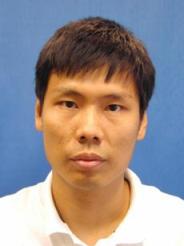 Boon Sain Yeo received the B.Eng
and Ph.D. degrees in Electrical and Electronics Engineering from
University of Glasgow and Imperial College of Science and Technology,
respectively. He has been with the Institute for Infocomm Research
(I2R, formerly known as Centre for Wireless Communications, NUS and
Institute for Communications Research), since 1998. From 2004 – 2005,
he was appointed head of Wireless Sensor Networks Laboratory in the
Networking Department. Since 2005, he has been seconded to lead the
technology division of Wavex Technologies, focusing on wireless
development and RFID, and to setup Wavex Innovations, the R&D arm
of Wavex Technologies, under a government initiative to help
technologically upgrade the small medium enterprise in Singapore. He
has participated actively and led a team of hardware engineers in the
deployment of the 2nd generation RFID systems to the 22 Regional and
Community Libraries for the National Library Board of Singapore (NLB).
He was also the project manager for the RFID Smart-Shelf project, which
he initiated at I2R. He is also an adjunct Assistant Professor in NUS.
His research interests are in technologies relating to wireless systems
and network, and operational approaches to optimize telecommunication
systems. He has been actively participating in numerous conferences
serving as TPC chair, steering committee chair and General co-chair in
more than 10 conferences the recent 3-4 years. He is also currently
serving as an editorial board member for several reputable journals. Boon Sain Yeo received the B.Eng
and Ph.D. degrees in Electrical and Electronics Engineering from
University of Glasgow and Imperial College of Science and Technology,
respectively. He has been with the Institute for Infocomm Research
(I2R, formerly known as Centre for Wireless Communications, NUS and
Institute for Communications Research), since 1998. From 2004 – 2005,
he was appointed head of Wireless Sensor Networks Laboratory in the
Networking Department. Since 2005, he has been seconded to lead the
technology division of Wavex Technologies, focusing on wireless
development and RFID, and to setup Wavex Innovations, the R&D arm
of Wavex Technologies, under a government initiative to help
technologically upgrade the small medium enterprise in Singapore. He
has participated actively and led a team of hardware engineers in the
deployment of the 2nd generation RFID systems to the 22 Regional and
Community Libraries for the National Library Board of Singapore (NLB).
He was also the project manager for the RFID Smart-Shelf project, which
he initiated at I2R. He is also an adjunct Assistant Professor in NUS.
His research interests are in technologies relating to wireless systems
and network, and operational approaches to optimize telecommunication
systems. He has been actively participating in numerous conferences
serving as TPC chair, steering committee chair and General co-chair in
more than 10 conferences the recent 3-4 years. He is also currently
serving as an editorial board member for several reputable journals.
|


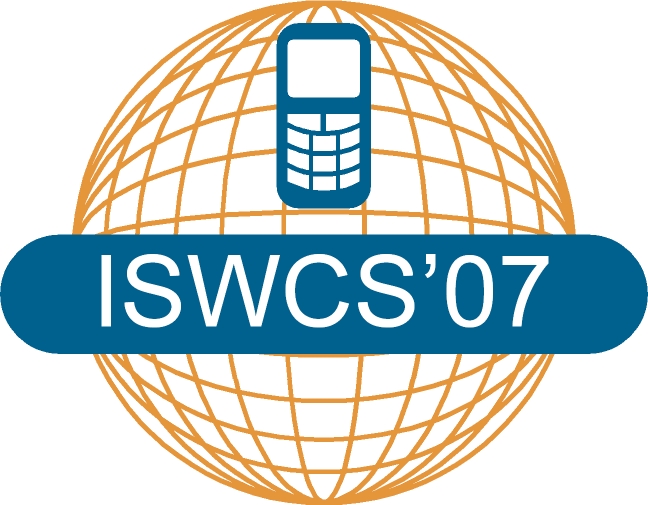







 Home
Home Call for Papers
Call for Papers Committee
Committee Submission
Submission Instructions for Authors
Instructions for Authors Important Dates
Important Dates Sponsors
Sponsors Program
Program Keynotes and Panel
Keynotes and Panel Tutorials
Tutorials Registration
Registration Social Events
Social Events Hotel Arrangement
Hotel Arrangement Conference Venue
Conference Venue About Trondheim
About Trondheim Previous ISWCS
Previous ISWCS